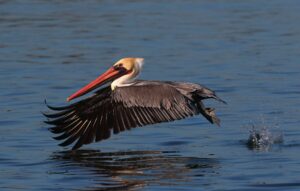Paying attention to birds has gotten me through this pandemic. There were days early in shelter in place when I snuck out before sunrise, hoping my neighbors weren’t judging me for leaving home, and headed for the hills to listen to the dawn chorus. There’s a brief window in spring when migratory birds from Central and South America come to the Bay Area to sing and breed. Knowing that was often all that motivated me to get out of the house.
I’m certainly not the only one. Birding is having something of a moment in 2020: from shelter in place helping us notice more of our backyard birds to the Central Park incident drawing attention to our hobby and to Black Birders Week, which celebrated the birding community’s diversity and foregrounded conversations about the racism that occurs within it.
Birding has never existed in a vacuum apart from society, and right now the health crisis and social movements happening around the world are intersecting with birding in interesting ways. Like with everything in 2020, the birding world feels immersed in multiple momentous conversations, with paradigms reconsidered. Most of us are conversing online, from our home computers, without ever leaving our house and, if you’re like me, also without entire certainty our teeth were brushed that morning.
Meanwhile, the birds are on the move.
The fall bird migration is exciting to imagine as we shelter in place. Picture the Bay Area in your mind’s eye and then zoom out to see the whole Western Hemisphere, where hundreds of species—from hawks and songbirds to shorebirds and ducks—are in flight from, say, Southeast Alaska to the Bay Area, while others make incredible journeys from the Arctic to Argentina.
Unlike spring, when only adult birds head north to breed, the fall migration swells with the legions of young birds born that year. Most of those young birds probably won’t survive to see spring, so in terms of sheer numbers the fall migration is enormous. All of that movement, millions and millions of birds flapping and flying overhead, while we sit tight in our homes.
Exactly when migration occurs depends on species, regional populations, and even the individual. Some shorebirds start showing up for their Bay Area winter stay as early as July, while other long-distance hawks may not pass through until late October en route to South America. But none of it lasts very long—some birds only need a couple of weeks to travel across the world.
The Bay Area sits at an intersection ideal for watching all this movement and transition. While in some parts of the country birders are bidding migrant species goodbye, our Mediterranean climate lures birds here for the winter, so we’re welcoming them home.
Birds are often what ground me. You don’t have to be a birder to know how the sudden sight of a hawk flying surprisingly close pulls you into the present moment. With more of us engaging online now, I reached out to local birders about their birding communities, both virtual and in real life, fall migration, and the birds that have kept them grounded when it’s time to step outside.
The Neighborhood
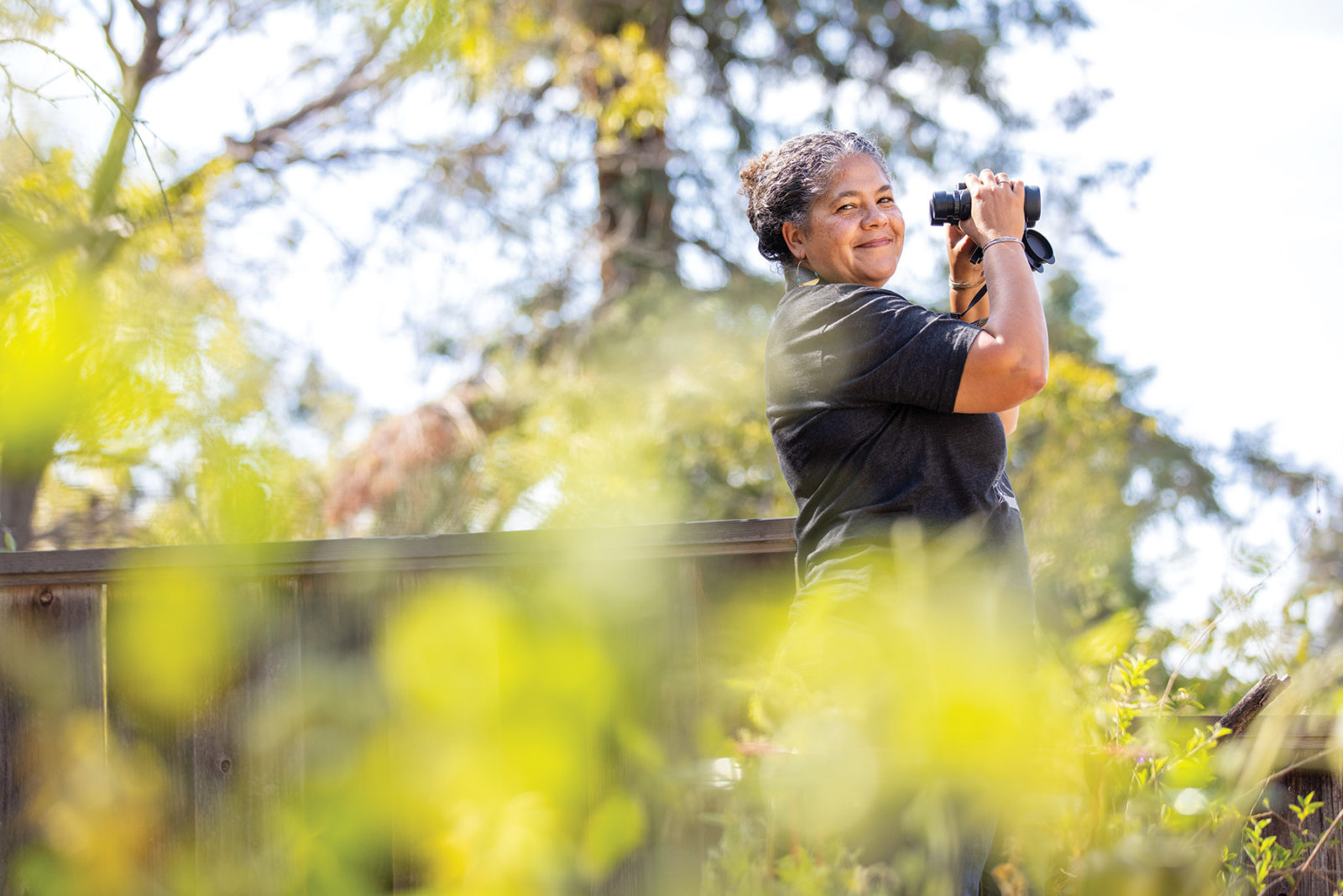
Just two blocks off of High Street in Oakland, Amani Katherine Dunham lives in what sounds like the Mister Rogers’ neighborhood of shelter in place. Her backyard is separated by a low fence from her next-door neighbors, Mary and Shelli, who are avid campers and just generally outdoorsy people. On the other side of them is Becca, who is studying ecology and becoming an interpretive student aide for the East Bay Regional Park District.
And then there’s the snag that they can all see from their yards. It’s a small redwood with a dead top that sticks into the sky like a skinny spire. Amani and her neighbors have observed crows, robins, cedar waxwings, and most crowd-pleasingly, a pair of red-shouldered hawks perched in the snag. Nuttall’s woodpeckers have been seen foraging for insects in the bark.
During shelter in place, Amani and her neighbors got a lot closer, shopping for each other, sharing things. “But we also definitely bonded around the snag…now we’re texting each other all the time” about the latest bird sighting, she says.
Amani’s lived in her house for ten years, been birding for about seven, and has always made a point of observing what’s around. But since shelter in place, she’s been working from home, noticing species and behaviors she’s never seen before. Most surprising were flocks of cedar waxwings that showed up in February and stayed until late May. She wondered, “Were they here every year and we literally just never noticed?”
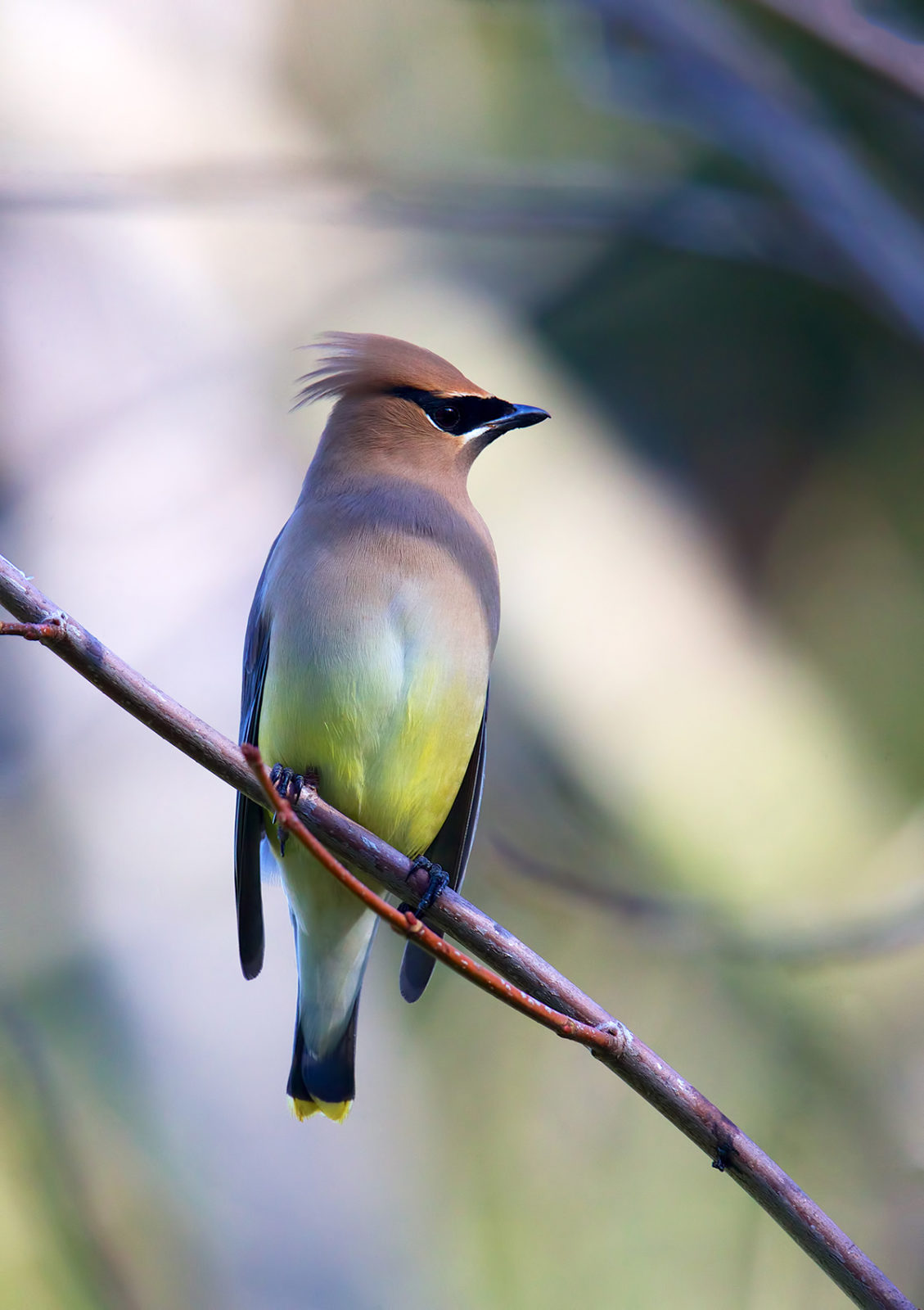
This year the snag has marked time and seasons with the comings and goings of birds for Amani and her neighbors. The great horned owls she’d seen there in February and red-shouldered hawks had mostly left the snag by March. Winter nesters, the great horned owls would have fledged their chicks in time to feed on all the new local life of spring. Red-shouldered hawks can nest early too, especially in the Bay Area’s warm climate. Both species may use high points, like a snag, for vocalizing, so that their songs can carry.
In early spring, the flocks of dozens of cedar waxwings perched in the snag, interchanged with flocks of robins as the season continued. The two fruit-eating species often band together to look for food and enjoy safety in numbers. They could be perching here to rest and watch for predators. By summer, those birds disappeared and crows and ravens took over, hanging out all day in raucous groups, seemingly to the exclusion of other birds. Toward the end of summer when the corvids left, other species started to return—a few robins, some house finches, and goldfinches. House finches sometimes nest multiple times in a year, all the way through summer, while goldfinches nest late, waiting for the thistle flowers that seed later in the summer. By early fall, young finches abound, like Amani is seeing now at the snag.
The raptors haven’t returned, but she can hear red-shouldered hawks calling from eucalyptus that line a nearby creek, and in August she heard a great horned owl hooting from up the hill. Will they come back to the snag?
Many of the birds Amani and her neighbors see just perch on the snag and then move on; others, like the scrub jays and robins, will also land in their yards, feeding on the fallen plums from Amani’s trees or the figs in Mary and Shelli’s yard. Together their backyards form good enough habitat that one morning Amani saw seven or eight species from her back door in a span of five minutes. That’s a pretty high diversity of birds for a house in the heart of a city.
That a home bird list is only as good as the neighborhood’s collective backyard makes for a halfway decent metaphor about the impact our physical and proverbial neighbors have always had on us. But we’re all more keenly aware of it this year. While connecting with her real-life neighbors over the snag, Amani’s also explored birding neighborhoods online.
I met Amani through the newly formed West Coast Birders Facebook page, a group with an interesting origin story. It was formed after moderators of another western birds Facebook group banned posts about Black Birders Week, the online celebration of Black birders that started in response to a white woman calling the cops on a Black birder in Central Park. The moderators had deemed the post political, but many users countered that discussing racism in the birding community was about safety and not politics. They decided to branch off and form West Coast Birders.
Amani says it’s been fascinating to watch these dynamics play out on social media. For her, Black Birders Week and the resulting conversations have been a historical moment “just in my own personal journey, both as a birder and as a Black woman.”
She participated in the week by sharing some of her bird photography and attending a few live webinars featuring speakers from around the country. She related to some of the Black birders’ stories about their fears while birding. On her annual Delta birding trip, there’s always a sense of worry and discomfort.
While tuning in to those webinars, Amani says, “Even though I don’t know any of those people, I just felt really connected. I felt a really deep sense of belonging.” The willingness to at least try to engage around racism makes it “feel more inclusive and safer in some ways” for her. “It’s exciting to me that the different conversations are happening.” She hopes to go birding with a Black birder group sometime.
Right now, though, like a lot of us, Amani feels stuck in her house. She’s counting on the redwood snag to get her through. Wondering what could show up next in her yard feels like being a kid on Christmas morning. “I’m excited to see who owns it in the fall,” she says. “It makes the world feel a little bigger for sure.”
Peregrinations
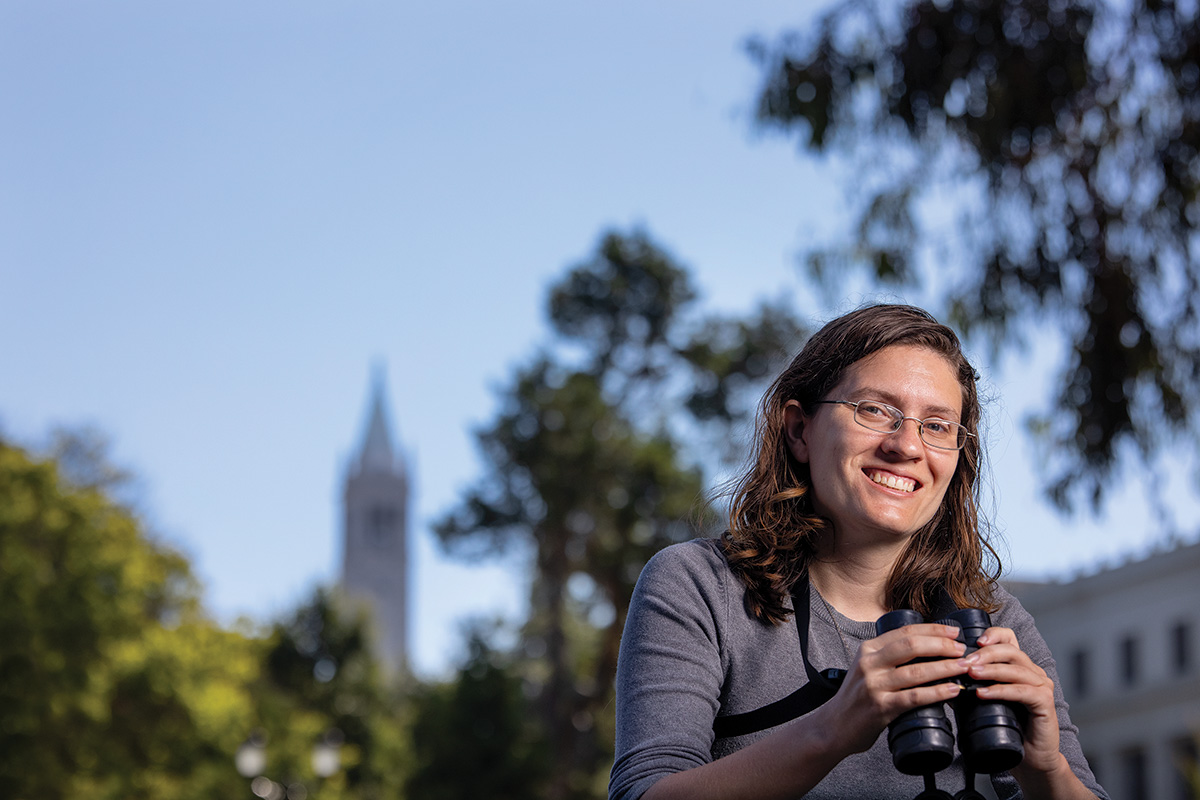
For someone who usually travels for work, Lynn Schofield’s range has shrunk a lot this year. A biologist for the Institute for Bird Populations, she’d planned to research raptors in the Sierra Nevada this summer, specifically northern goshawks and spotted owls. But the pandemic has kept her home in her West Berkeley neighborhood. Since March, she’s hardly strayed beyond the area between the marina and the hills.
There is a lot of diversity within that range, though, from songbirds up in the hills to shorebirds down by the Bay. “The great thing about the Bay Area is that you can select from a huge number of habitat types without going very far,” Lynn says.
But mostly she’s focused her attention on one particular species. She and her husband, Sean Peterson, volunteer as “social media directors” for two very famous local raptor residents: Annie and Grinnell, the peregrine falcons that nest on the UC Berkeley Campanile.
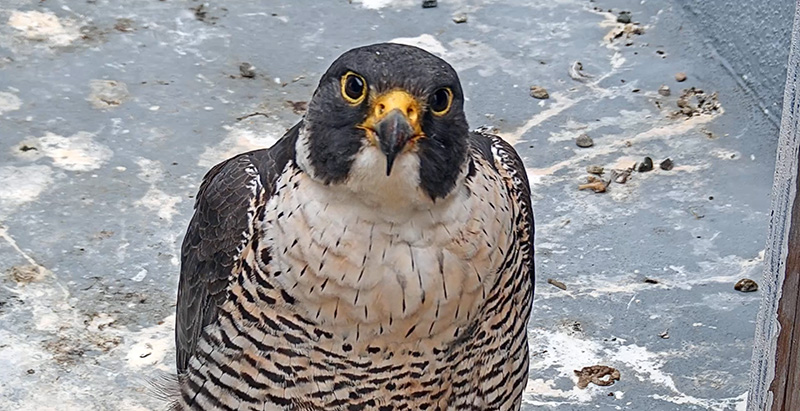
A few years ago, Lynn and Sean began noticing two peregrine falcons flying over the campus and suspected (correctly) the pair was nesting in the Campanile. They joined with raptor biologists around the Bay Area to monitor the birds. Scientists from the UC Santa Cruz Predatory Birds Research Group, who study local peregrine falcons, banded the UC Berkeley chicks after they hatched. In 2019, the group wanted to share their excitement about the birds with the public and raised funds for a nest webcam.
This spring, thousands of people watched from their homes as the falcons laid eggs and then hatched three falcon chicks. Annie’s first egg came just as sheltering in place went into effect in the Bay Area.
Whereas before Lynn and Sean would have hosted in-person talks about the raptors, they moved online to livestream throughout spring and summer. Viewers from around the world typed in question after question. A four-year-old wanted to know why the falcon chicks are so fluffy. Someone from Brazil thanked the couple for their work. Multiple people wanted to know if the hourly ringing of the Campanile bells affects the falcons. Lynn and Sean matter-of-factly answered questions, while taking turns bouncing their two-year-old on their knees.
The word peregrine means “wanderer.” The species lives all over the world and can migrate incredible distances. But the warm climate and abundant supply of pigeons here mean our local peregrines have no need to migrate. In late August, the three peregrine chicks left the Berkeley campus to look for territories of their own. They might stay in the East Bay but it’s possible they’ll fly farther afield, Lynn says. Annie and Grinnell will stay in their current territory, from the Berkeley marina up into the hills (mirroring Lynn’s current range). Falcons don’t tolerate other falcons on their territory, so if you see some hunting for pigeons around downtown Berkeley, there’s a good chance it’s Annie or Grinnell. The birds will likely return to the Campanile and be in view of the webcam for nesting season by February.
While we’re all stuck at home, some people have kept the webcam on in the background as they work, listening to the chicks call and the parents respond. It’s a reminder that for all the human world problems, the natural world continues. “There’s good things out there still,” Lynn says.
Galbatross
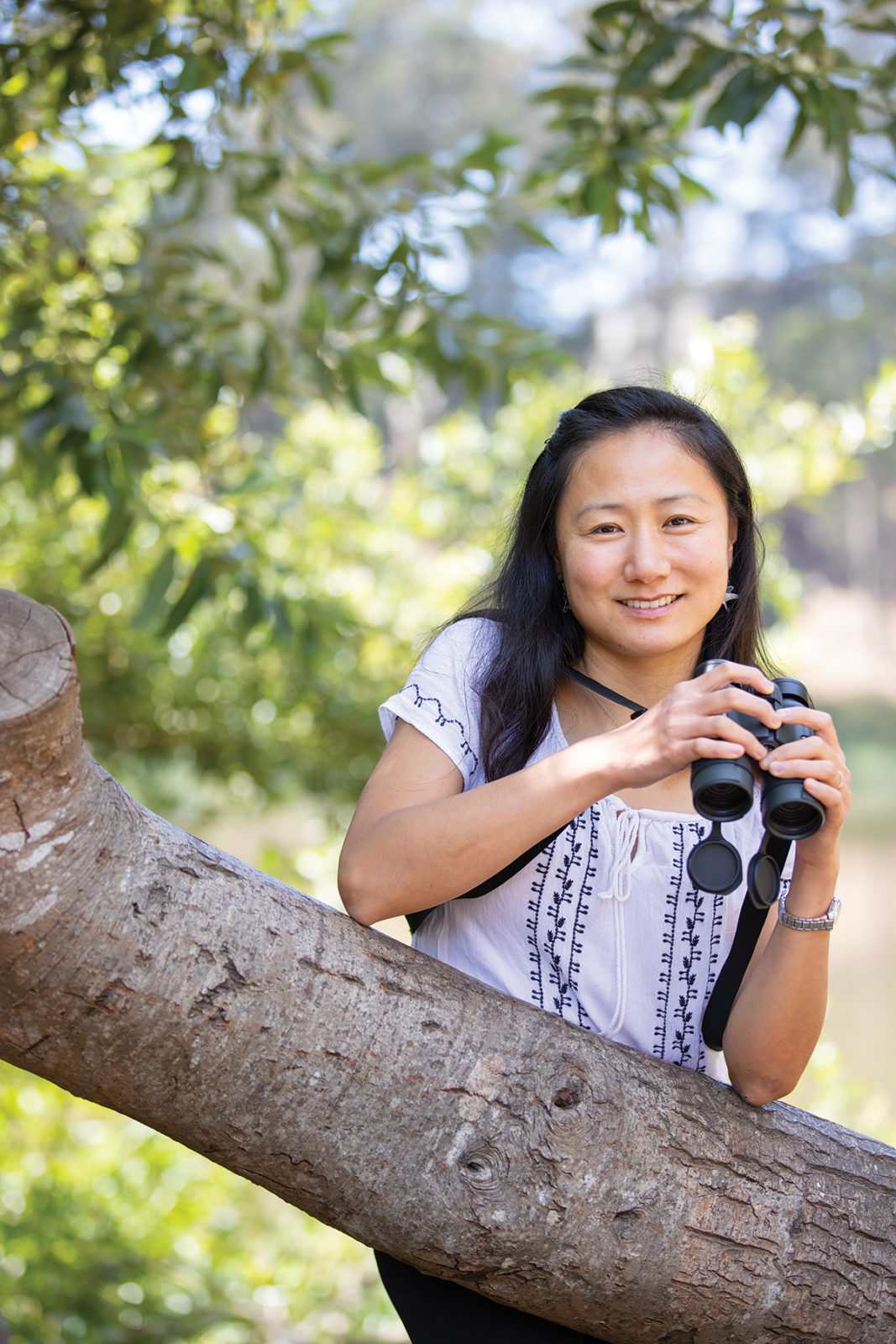
This spring, Joanna Wu became a “Galbatross.” A San Francisco–based avian ecologist with the National Audubon Society, she was recruited by a few of her colleagues. The Galbatrosses are a small group of birders across the country dedicated to learning more and raising awareness about female birds.
In many bird species, the brightly colored males stand out compared to the drab brown females that presumably blend in with their nests. “Because of that, female birds are sometimes overlooked,” Joanna says. Birders tend to get excited when spotting a male bird and less so about a female of the same species—we can feel we haven’t really “seen” the species until we’ve seen the male. “Imagine a photographer: if they capture a photo of a really drab brown bird, it’s just not as exciting as a bird in bright plumage,” Joanna says.
For the same reasons, female birds are often overlooked in research, and there might be a lot of data we’re missing because we’re unconsciously biased toward males. Cornell University research shows that many birds group by sex in winter; males live in one habitat while females live in another. But the majority of conservation plans don’t take this biology into account, and by default they focus on saving habitat where male birds live. In one case study, Cornell researchers found female golden-winged warblers lost twice as much of their wintering habitat as males did in recent years.
That’s just one study, and yet it’s striking. The Galbatrosses want to remedy that information shortage, so they launched Female Bird Day.
On Memorial Day weekend, Joanna went to Pine Lake Park, near her house and Stern Grove in San Francisco, to conduct a casual study. She just walked around and looked for birds, but she only counted and recorded females. Her colleagues across the country were at similar parks, trying to do the same.
“It was so hard! And it made me realize how many birds I’m not one hundred percent sure of the sex,” Joanna says. Among the first tasks for the Galbatrosses: simply compile more information in a database about how to identify female birds. Most field guides lump juvenile and female birds together, since newly born birds often look similar to females. A Galbatross pipe dream is to create an entire field guide on identifying female birds.
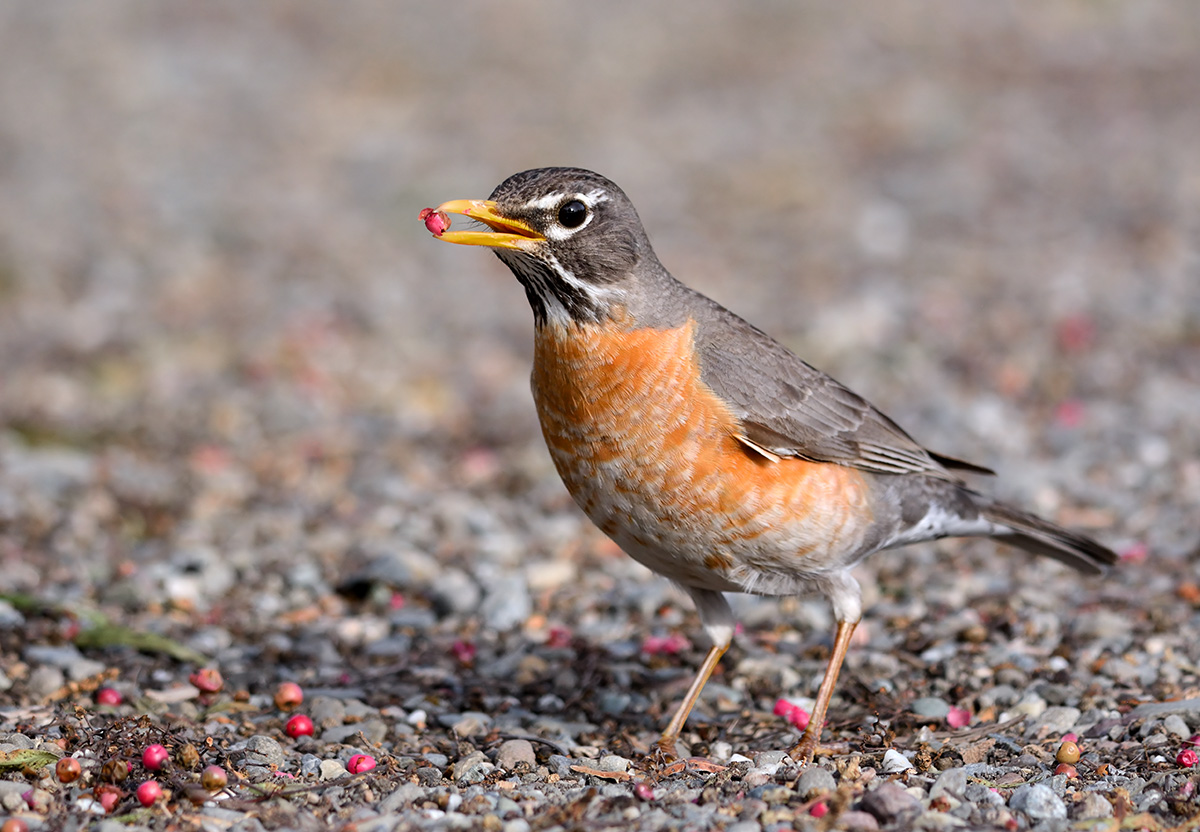
The Galbatrosses also hope to organize another Female Bird Day count next year and engage more participants. For now, Joanna says, the goal is to raise awareness of female birds, mostly through social media, which could play a small role in eventually correcting the data gap. People online have responded positively so far, conceding they haven’t thought much about female birds and they’re grateful the issue has been brought up.
“Our movement is not trying to be feminist per se. We just think that there isn’t enough research done on female birds,” Joanna says. But the project also subtly highlights how unconscious bias shapes science. Neither birding nor the science of birds is separate from society, and what we tackle at large trickles down into the world of watching birds. Joanna says both Female Bird Day and Black Birders Week “are just the more visible parts of a larger movement to make our workplaces, birding, and science more diverse and inclusive.” And bringing more perspectives to the table benefits everybody—including and especially the birds.
Support for this article was provided by the March Conservation Fund.



